Samsung Galaxy S 2 (International) Review - The Best, Redefined
by Brian Klug & Anand Lal Shimpi on September 11, 2011 11:06 AM EST- Posted in
- Smartphones
- Samsung
- Galaxy S II
- Exynos
- Mobile
Keyboards
By default, the SGS2 comes with Swype and the Samsung keypad preinstalled. I’ve moved away from Swype in recent months and started taking to the default gingerbread keyboard quite a lot, and it’s odd to see that Samsung has removed it from their stock ROMs. For me, this was one of the major enhancements that came with 2.3, and it’s puzzling how many different OEMs choose to purposefully not include it, and instead include their own strange keyboard in its place.
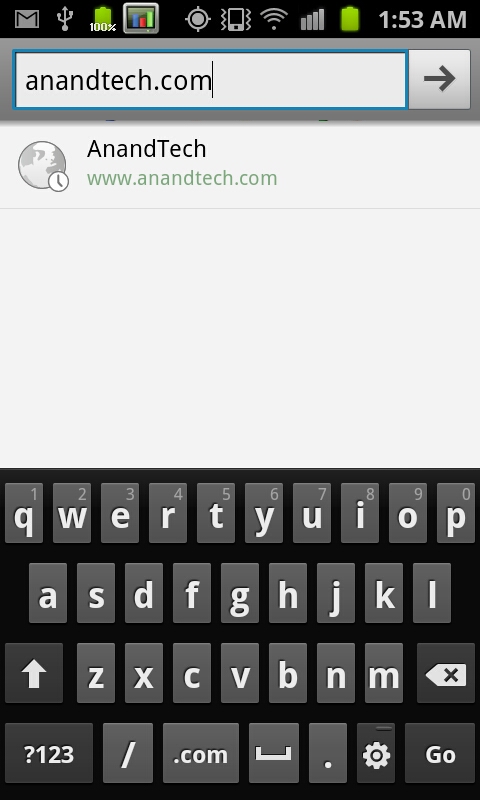
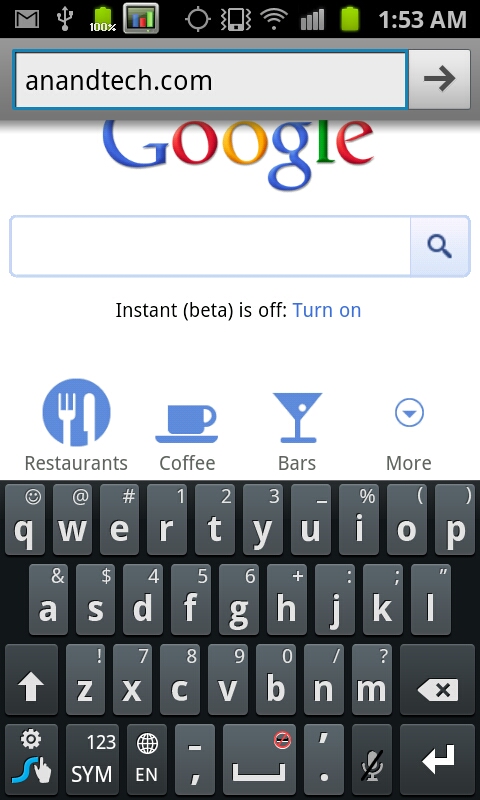
The Samsung keypad honestly is less than ideal and feels like it belongs back in the Android 2.1 world from whence it came, which is likely why Swype is set as default. It lacks autocorrect functionality by default and generally just looks drab.
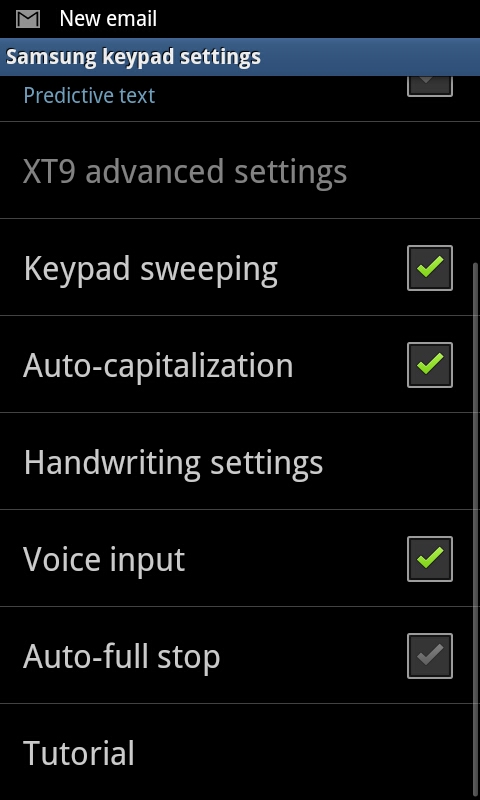

Getting autocorrection enabled requires diving into the menus and enabling it for your given language, and even then isn’t that great. I guess I’m confused why Samsung would elect to not include the excellent 2.3 keyboard and instead force users to install the APK themselves.
Messaging
SMS is one of those things that each phone needs to do perfectly, and I think it’s especially worth taking a formal look at when an OEM moves away from the stock Android application. Bring up messaging and you get a list of ongoing conversations sorted by last activity, just like you’d expect.
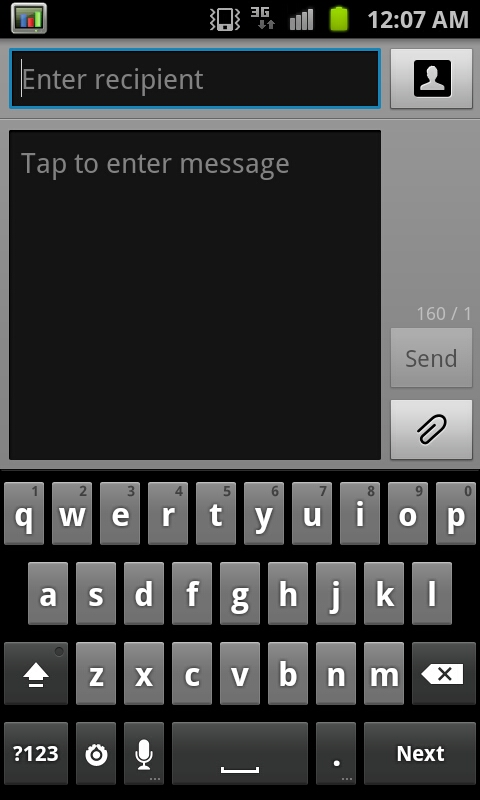
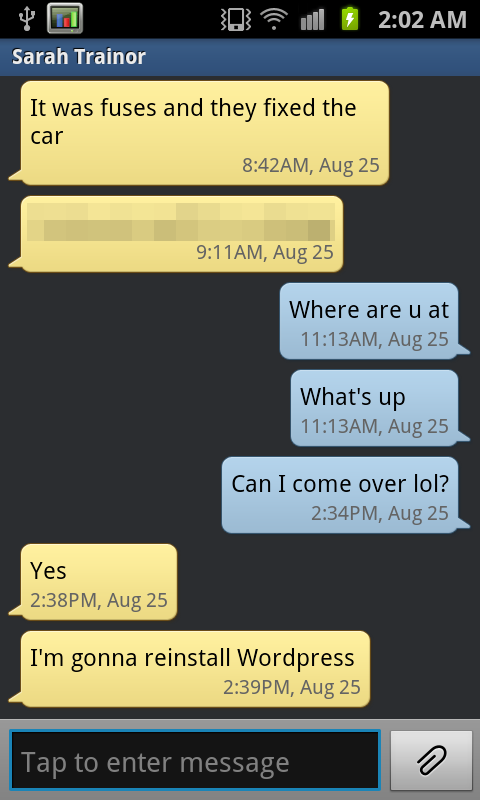
Tapping new gives you a nice, clean composition page complete with character count. The conversation view is threaded and in large speech bubbles, complete with date and time stamps on each message.
Honestly I can find no fault with the Samsung messaging application. It doesn’t make the mistake that other OEMs have made by making font overly huge or decorations take away from usability and vertical space, though the composition box could stand to be a row shorter so more of the thread is visible. In addition, I spent a lot of time hammering on the SGS2’s messaging stack to try and make it slow dramatically like I’ve seen a few other Android phones do - no such lag took place, which is a great sign, even after a few weeks without deleting anything.
Browser
Like the original Galaxy S, on SGS2 samsung has made enhancements to the browser that dramatically increase smoothness. At the time we could only explain the performance increase by shrugging and claiming it was GPU accelerated. We know a bit more now about what enhancements are required to make browsing smooth in this fashion, and the answer lies in a backing store. A backing store is essentially a nice way of saying cache, and in this case what’s being cached is the rendered page itself, which is either rendered into a texture or some intermediary that’s a step above final rendering.
A backing store is what makes iOS’ browser so smooth, and you can see it render into the texture (or if you overscroll beyond the render, where it hasn’t yet) with those little grey rectangles. Render into a big texture, and then it’s a relatively free GPU operation to transform and clip that texture when a user scrolls around the page, though zooming will require a re-draw. Until Android 3.x, however, the stock Android browser hasn’t had a backing store, which is why translating around feels choppy. As a result, it has been the burden of OEMs to make their browsers feel snappy by incorporating their own backing stores. HTC works with Qualcomm to bring an appropriate level of smoothness to their devices, I already mentioned Android 3.x has one (which will no doubt carry over to Ice Cream Sandwich), and Samsung again has one this go-around in SGS2 just like they did with the original SGS.
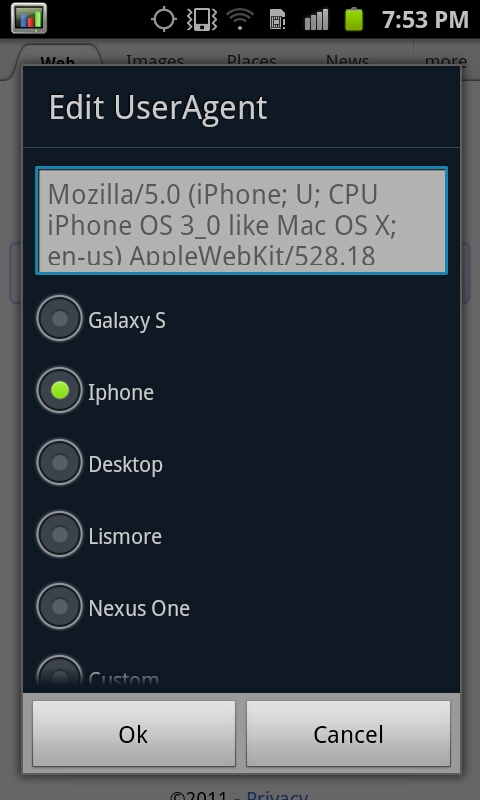
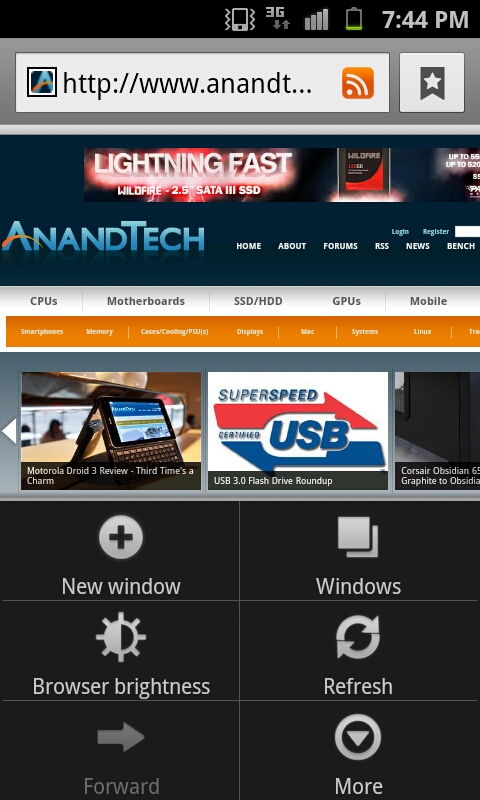
So how good is SGS2’s browser backing store? Very good. Far and away this is the smoothest Android 2.x browsing experience, by a large margin. The only downside to the whole thing is that the browser has 16 bit color, again undoubtedly to make this an easy texture for manipulation by the GPU. I’ve also noticed one or two times that the browser will go to a white screen instead of showing the content after it’s loaded, which to me indicates that getting the backing store always working perfectly with a big page can be a challenge - perhaps GPU memory is at a real premium when this happens. I’m told this is fixed in newer firmware editions. That said, the tradeoff is well worth it, as zooming, translating, just about everything is buttery smooth. Browser smoothness is finally basically at parity with iOS.
What’s very impressive is that Samsung even manages to keep Flash 10.3 plugins animated while panning and scrolling around, something that currently HTC temporarily halts while translating around in their browser. It’s hard to communicate just how smooth and fluid the SGS2 browser is, and I’d encourage interested parties to watch our video which demonstrates it.
Finally, there’s one last semi-hidden browser feature - custom user agents. Enter “about:useragent” into the URL bar, and you can pull up a menu and select between a number of different user agents and masquerade the SGS2 as an iPhone, Galaxy S, Desktop (OS X 10.5.7 Safari), Nexus One, Lismore, or custom. This is something again I wish the stock Android browser would offer similar control over.










132 Comments
View All Comments
dagamer34 - Sunday, September 11, 2011 - link
On pg 15, Galaxy S uses a SGX 540 GPU, not 530. Other than that, great review!Synaesthesia - Sunday, September 11, 2011 - link
Staggering review, you really are the most comprehensive and scientific reviewer around, bravo!Samsung have really impressed with this phone, in terms of how much effort they have invested in the hardware and software. One thing still stands out for me, the battery life. While good, it still doesn't hold a candle to the iPhone 4, as shown on the charts.
LostViking - Saturday, September 17, 2011 - link
What do you mean?Its about 30% worse when web browsing (mostly because of the much larger screen I reckon), but better in the other tests.
If you are one of those old timers who actually use the phone for talking the SGSII is about 30 better ;)
When I am low on battery, and don't have access to a charger, that's usually what I would prioritize.
xdrol - Sunday, September 11, 2011 - link
For me the mentioned Cat 5 limit looks reasonable - you don't get user-level 2.0 Mbps because of the overhead of the PDCP/RLC/MACd protocols (about 15% -> 2.0 Mbps is 1.7 Mbps for IP).wilky76 - Sunday, September 11, 2011 - link
Alot of people that have the Samsung Galaxy S2 are suffering from framerate problems when using either 720p or 1080p in low light including myself.What basically happens is when the camera tries to focus in lowlight the framerates drop to around 13fps, then jump back upto around 30fps again, basically making any HD video recording useless in low light because of the stuttering, the only fix that is known is to drop the exposure to -2 as this stop the stuttering, or use 480p when indoors or poor light.
Some folks have returned their SGS2 because of this problem, only to receive another with the same problem.
There has been a couple of camera firmware updates on Samung own app site, which to this date still hasn't sorted the problem out & in some cases people that weren't suffering from this problem, now have it after updating the camera firmware.
Can any of you guys at Anandtech test your SGS2 in low light with either 720p or 1080p to see if the mobile you received for reviewing also suffer from this problem.
But what is strange is that not everbody has the framerate problem, so it could be due to which sensor you get with your SGS2, and could proberly be sorted with a firmware update eventually.
Anyways people with this problem and there is a few can be found in this post over at XDA
http://forum.xda-developers.com/showthread.php?t=1...
DrSlump - Monday, September 12, 2011 - link
Hi, i have exactly the same problem with my samsung galaxy s2.I got casual stuttering (a frame loss) during normal light conditions and severe stuttering under low light conditions.
As soon as the firmware raises the sensor gain to match the detected light, the framerate goes down to 25fps and when autofocus occours the framerate goes down to 13fps, and then returns back to 25fps when the autofocus is finished.
I olso noticed that when i try to frame a tv or a monitor, severe banding occours. Even taking a video when the light source is a tv or a monitor, banding occours. Seems like the isp isn't able to compensate the frequency of the light source.
In a lot of situations it's impossible to take a video due to the severe stuttering :(
Any one of you has these problems? How to solve it?
I would like to ask to the autor:
did you notice some problem with the display? There is a thread in the xda-developers forum that speaks about the yellow tinting or faded out left side of the screen. Please can you report about this problem?
B3an - Sunday, September 11, 2011 - link
Why dont you just admit it's the best phone around hands down? :) Not just the best Android phone. It's clearly miles superior to the outdated iPhone 4.Shame you yanks have had to wait forever to get it, only to get 3 different versions that dont even look as good and have ridiculous names. I've been using a GSII since April and it's just unmatched.
ph00ny - Sunday, September 11, 2011 - link
This yank got it on the UK launch day and i've been enjoying it sincesteven75 - Sunday, September 11, 2011 - link
It's not better in battery life, audio quality, display resolution and sharpness, or the many ways that iOS is better (AirPlay, app selection AND quality), immediate OS updates, etc).Gread Android phone though for those interested in 4.3" displays, which definitely isn't everyone. Personally, I'd wait for the Prime.
steven75 - Sunday, September 11, 2011 - link
Oh and outdoor display brightness, which even at 100% isn't a match for iPhone, but then it's even capped at 75% for temp reasons.